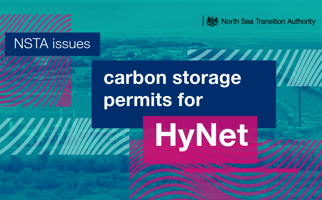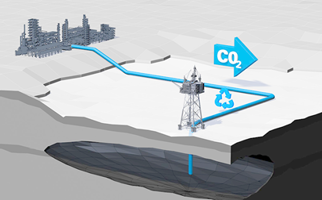
The Oil and Gas Authority (OGA) has described where it expects industry to focus its attention over the next year; in areas including efficiency, commercial culture and progressing new field developments.
The annual performance review, known as the ‘Tier Zero’ meeting, takes place in early Q2 every year with the managing directors of the 22 largest oil and gas producing companies operating on the UK Continental Shelf (UKCS) invited.
Using data gathered from the annual UKCS Stewardship Survey, the purpose of the Tier Zero is to review the performance of the basin, including how individual operators compare against each other across a series of benchmarking metrics, with a view to sharing best practice and driving improvement.
To promote an open and constructive dialogue, the meeting focused on the evidence-based benchmarking of operators in the areas of exploration through to decommissioning. Top performing operators in each area shared examples of their best practices with peers. There we numerous beneficial conversations, including around the areas of decommissioning and use of value adding technologies across the exploration and production lifecycle.
In addition, the OGA’s ongoing refresh of the Stewardship Expectations was covered, as well as a session by the Industry Cultural Change Champion, Steve Phimister, who shared benchmarks from the Deloitte Operator & Supply Chain Collaboration Survey. There was a productive discussion on how the OGA is continuing to drive MER UK using its stewardship and regulatory tools. Several of the key messages are relevant both for the broader group of UKCS operators and for the supply chain.
Some of the key findings from the Tier Zero include:
- UKCS production efficiency (PE) rose to 75% in 2018 – sustaining what has now been a successive six-year rise from the 2012 low of 60%. Continuing this improvement in operational efficiency is imperative in order reach the target of 80% by 2022.
- 2018 was an excellent year for movement of contingent resources into reserves with 110% of produced reserves replaced through progressed resources. 79% of this came from infield sanctions. Further progression of the UKCS’s 7+ billion barrel of oil equivalent (boe) of contingent resources into sanctioned reserves is of crucial important to realise Vision 2035 and MER UK. This includes both in-field resources contained within producing oil and gas fields, which can be matured effectively through the application of modern seismic data combined with infill drilling, as well as unsanctioned developments and marginal discoveries. Operators were reminded to use Pathfinder on the OGA’s website to advertise current and upcoming projects to benefit industry and the supply chain.
- Of the 4.1 billion boe currently classed as being prospects and leads, just 0.3 billion boe is drill-ready prospects. In addition to this, in 2018 less than 50% of planned E&A wells were delivered, with various causes, not all of which were related to financial issues. Operators need to deliver work programmes and work collaboratively to ensure a higher number of timely, quality wells are being drilled.
- Positive signs of an improved commercial culture are evident, with some impressive results, but improvement needs to continue and be consistent across all operators. The OGA and others continue to drive an improved commercial culture, and the OGA indicated it will be even more proactive in addressing issues where poor commercial behaviours are preventing MER UK.
- Estimates of decommissioning spend have become tighter since 2016. Now only 39% of operators’ costs are categorised as an AACE [1] class 5 estimate, compared to 79% two years ago. Where decommissioning spend has occurred, large reductions have been seen; in 2018 in the Northern North Sea and Southern North Sea actual subsea well removal costs reduced 40% from the previous year.
[1] Association for the Advancement of Cost Engineering
Measures covered
The OGA uses a series of benchmarking metrics with both the Tier Zero operators and separately the non-Tier Zero operators, throughout the year to measure performance. These include:
- Production efficiency
- Well operations management and surveillance
- Unit operating costs
- Reserves replacement
- Seismic acquisition and processing compliance
- Reserves and resources composition
- Drill-ready prospectivity
- Commercial issues and cases
- Consent breaches
- Data compliance
- Levy payment punctuality
- Measurement and allocation (offshore field metering)
- Supply chain collaboration
- Technology spend and deployment
- Decommissioning cost estimate compliance
The OGA closed the meeting reinforcing certain requests of industry, namely:
- To populate Pathfinder with unsanctioned projects
- To please share success stories and keep collaborating
- To come and speak with the OGA early to avoid enforcement scenarios
- A reminder the OGA wants to see pace in order to progress the development of ‘marginal discoveries’ and that 14 operators hold around one billion boe in contingent resources.
Next steps
The OGA continues to use the UK Stewardship Survey data and the material produced for the Tier Zero review to produce a series of regular benchmarking and insights reports. The OGA will soon launch a new interactive digital Production Efficiency benchmarking tool, followed by the annual UKCS Operating Cost report, Decommissioning Cost Report as well as a new State of the Basin report later in the year.
The OGA will be revising the Stewardship Expectations, with the objective of bringing greater focus to resource maturation and the associated enablers, including commercial aspects, projects and wells delivery.


